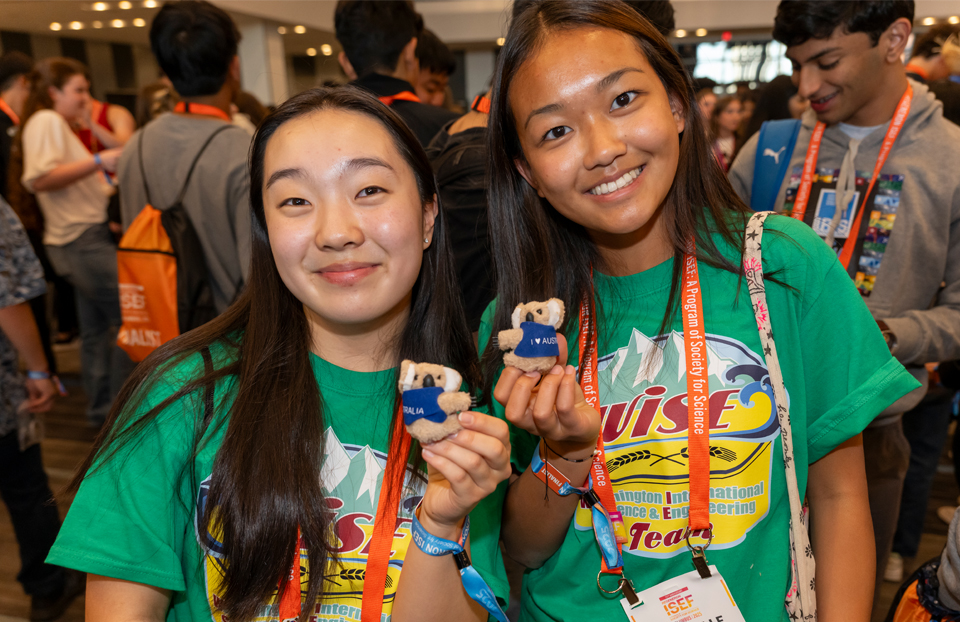Science fairs ‘transform’ students into leaders
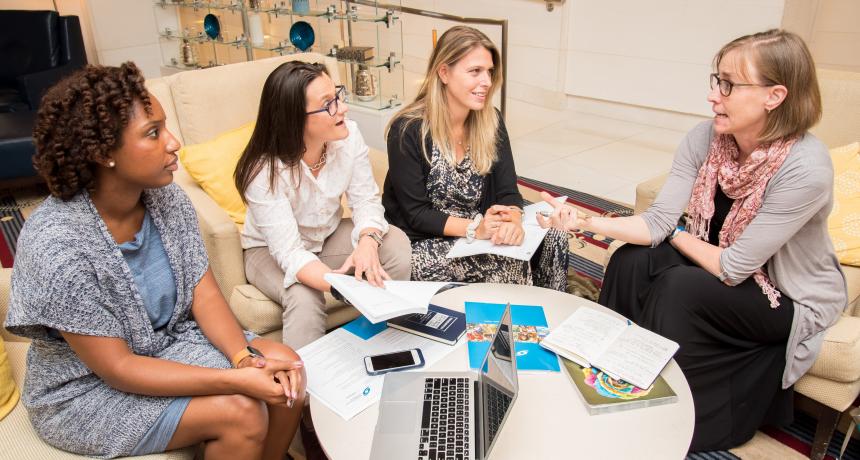
Janet Waldeck, a high school National Board Certified science teacher, has volunteered at the Intel International Science and Engineering Fair (Intel ISEF) for severalyears. “Where else can one meet the next generation of STEM leaders?” she asks, but Intel ISEF. She loves supporting a program that is “100% for children.”
This is the second in a series on volunteering at Intel ISEF. Read on to find out how the science competition showcases future STEM leaders.
WHAT VOLUNTEERING AT INTEL ISEF IS LIKE: I volunteered at Intel ISEF in 2015 when it was in Pittsburgh, and I will definitely volunteer when ISEF returns to Pittsburgh in 2018. The program is extremely well-run and it is entirely about children and their future.
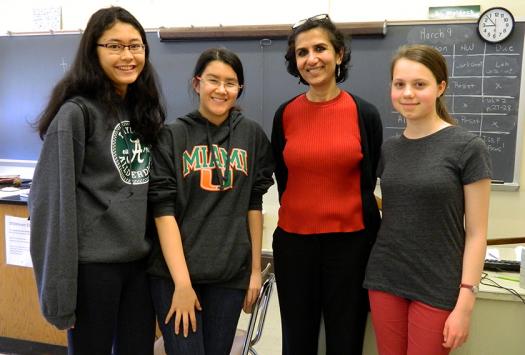
[Intel ISEF] is extremely well-run and is entirely about children and their future.
Where else can one meet the next generation of STEM leaders? Intel ISEF literally puts these future scientists and engineers center stage, allowing them to tell us their ideas. It gives children a voice. I am a high school science teacher in Pittsburgh, and I am excited to support a program that is 100% for children.
As part of the local arrangements committee in Pittsburgh, I worked to find translators to help international contestants who needed assistance with translation. I found a wide assortment of translators through the regional University language departments, local ethnic restaurants, Meetup language groups, and friends.
Register to volunteer or email isefvolunteer@societyforscience.org for more information
Nobel Prize winning scientists [are] vested in the ISEF experience and committed to empowering young students in science.
HOW NOBEL PRIZE WINNING SCIENTISTS SUPPORT YOUNG SCIENTISTS: I became intrigued with the Intel ISEF claim of involving Nobel Prize winning scientists. Are such renowned scientists really interested in high school science fair competitions?
Last fall when I was in Boston, I tried contacting one of the scientists on the ISEF list — Dudley Herschbach from Harvard University, who received a Nobel Prize in chemistry in 1986. We met and he graciously spent an entire morning answering my questions. I can definitely report back that Herschbach feels vested in the ISEF experience and is committed to empowering young students in science.
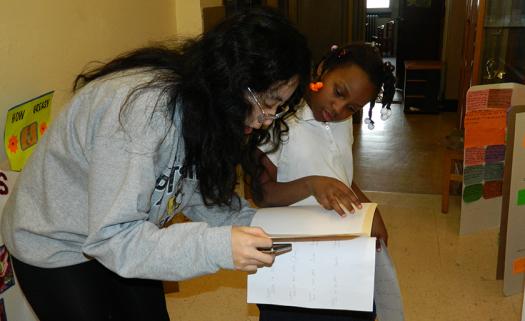
ISEF and STS transformed these students into the leaders of my next generation of students.
THE IMPORTANCE OF MENTORING: I mentor youth because I want to put them in the driver’s seat so they can own their academic destiny. I designed a science research course for Pittsburgh Public Schools where students learn to ask their own questions and design solutions. For me, this is the heart and soul of science — and studies indicate the impact that an early research experience has on student achievement in the sciences.
Students immersed in scientific research are at an advantage academically. They learn to set goals, take ownership of their learning, manage their time, communicate effectively both in speaking and writing, use the library, and interact appropriately with a professional community. This level of engagement is paramount to their success in the future. Teaching the research process helped me truly gain an understanding of how my students think and how I can best support their academic aspirations.
Students immersed in scientific research are at an advantage academically.
I have had several ISEF and STS finalists. I am incredibly proud of them for the work they did. My role in each case was simply one of opening doors, to connect each of them with the world of science beyond the classroom. I helped them locate mentorships that would define and fuel their academic passions. I see myself as a bridge between two worlds: the high school student and the research scientist. My job is to help students cross this bridge. Mentoring students is my dream job.
WHY SHE THINKS SCIENCE FAIRS LIKE INTEL ISEF ARE IMPORTANT: The ISEF and STS experiences transformed these students into the leaders of my next generation of students. Both science competitions provided workshops and networking opportunities where my students absorbed tips for public speaking and productive discourse with scientists. They brought these ideas and their excitement back to my classroom and are an integral part of the research process.
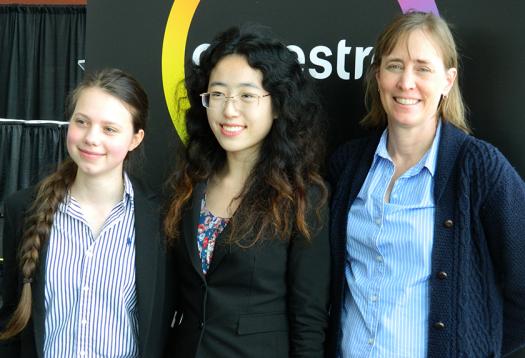
My ISEF and STS finalists initiated a STEM-inism club focused on encouraging young women to consider a future in science.
THE AFTER EFFECTS OF SCIENCE FAIRS: My finalists initiated a STEM-inism club in our high school which is focused on encouraging young women to consider a future in science. They organized two panels of university-level scientists, a female scientific panel and an African American scientific panel. The panelists have become the seed group for a mentorship program that we want to establish in the Pittsburgh Public Schools in the next academic year which will target students who are traditionally underrepresented in the sciences.
Science fairs are important because they transform students. It is where they become part of a larger scientific community. At a conference for teachers sponsored by the Society, I attended a session where we shared best practices and hurdles from successful high school research programs. It became strikingly clear that a successful science program is one that reaches ALL children. It’s not about winning at ISEF or STS, but rather about reaching everyone.
Intel ISEF puts these future scientists and engineers center stage … it gives children a voice.
HER ADVICE FOR NEW VOLUNTEERS: Be flexible. The event is very large; however, it is a lot of fun. I enjoyed meeting people from all over the world and introducing them to our Pittsburgh community.
HOW SHE BECAME INTERESTED IN STEM: I became interested in science because of my father. I remember long bicycle rides in the Cook County Forest Preserve, where we collected and identified leaves and bugs. He also bought me a microscope and taught me how to identify the different algae which were in the Desplaines River at that time. My science fair projects earned low scores; however, now I realize that I was so excited about telling the judges about all the wildlife we saw in the woods that I never got around to explaining the point of my projects. My father was officially my mentor and I believe that through Society programs (such as Science News for Students) and events (such as Intel ISEF), I have been able to grow a program in my school district that reflects the interest that was shown in me by him.
Science fairs are important because they transform students.
HER ADVICE TO YOUNG PEOPLE INTERESTED IN STEM: Science enriches life profoundly, and it is accessible for everyone. No matter where you are on the learning curve of science, your questions are important and your discoveries will make a difference.
